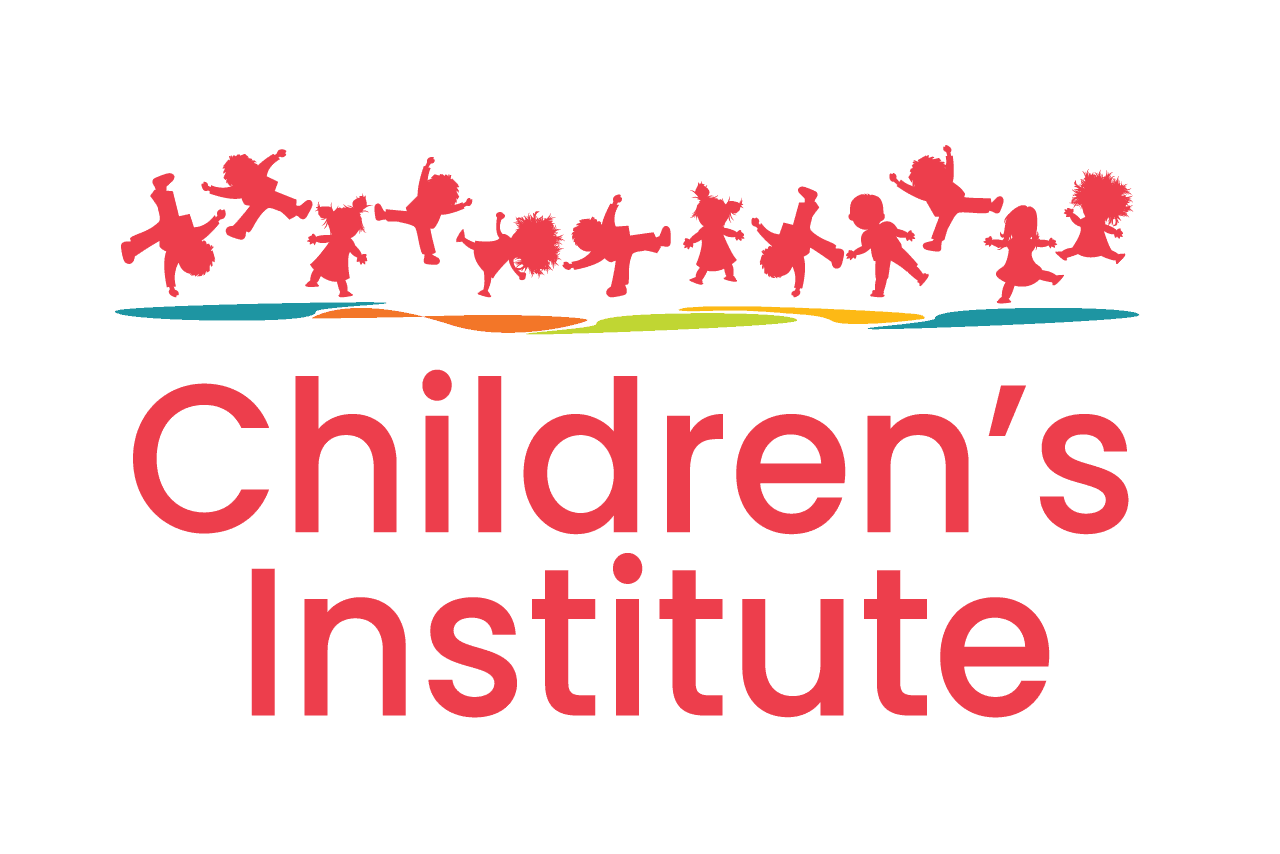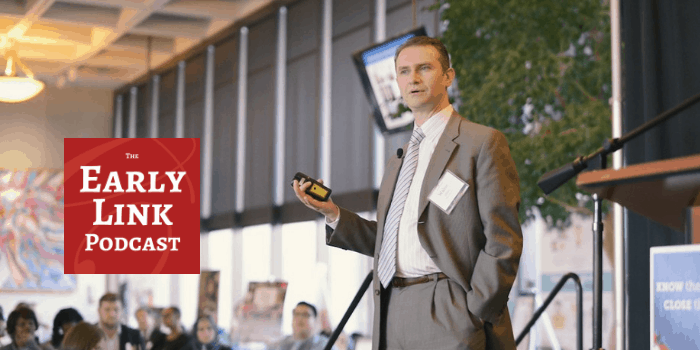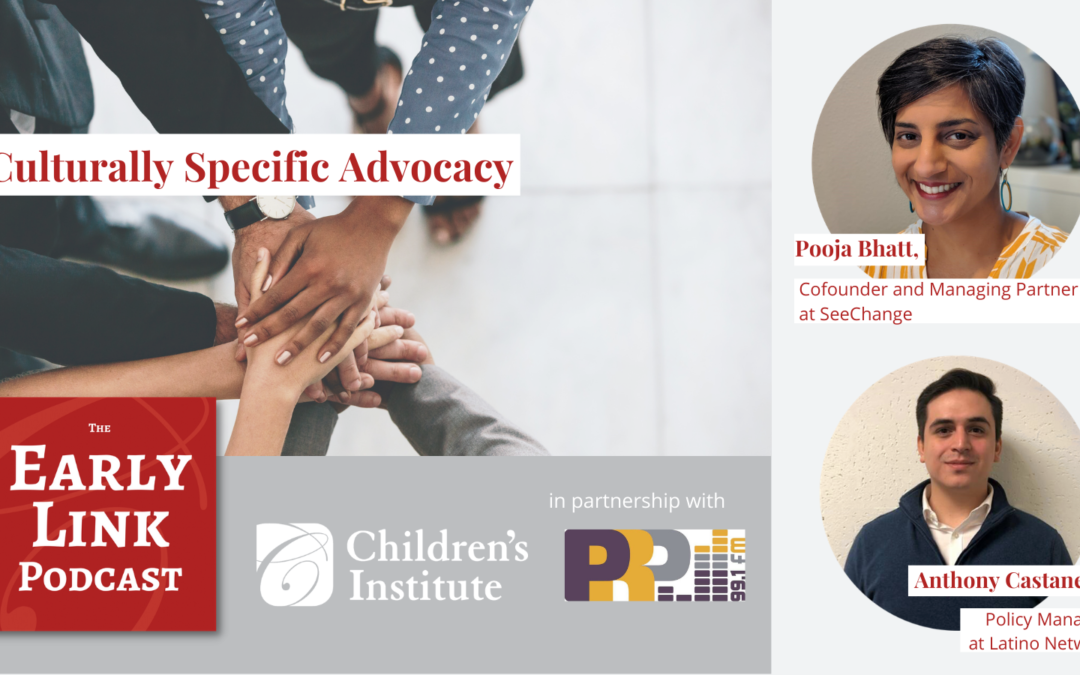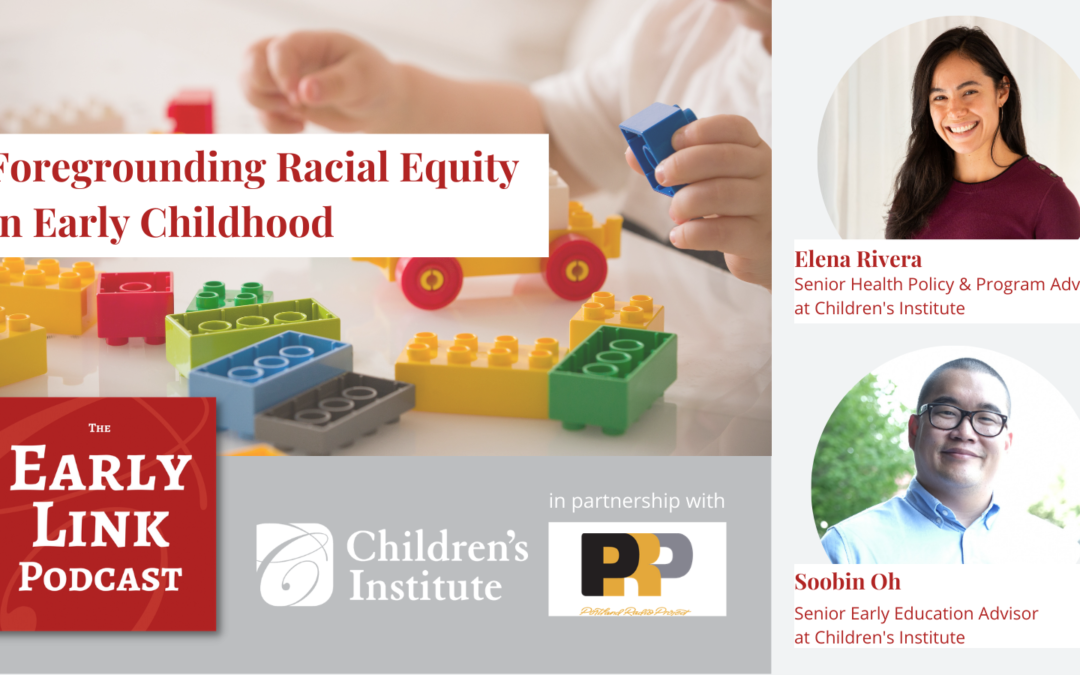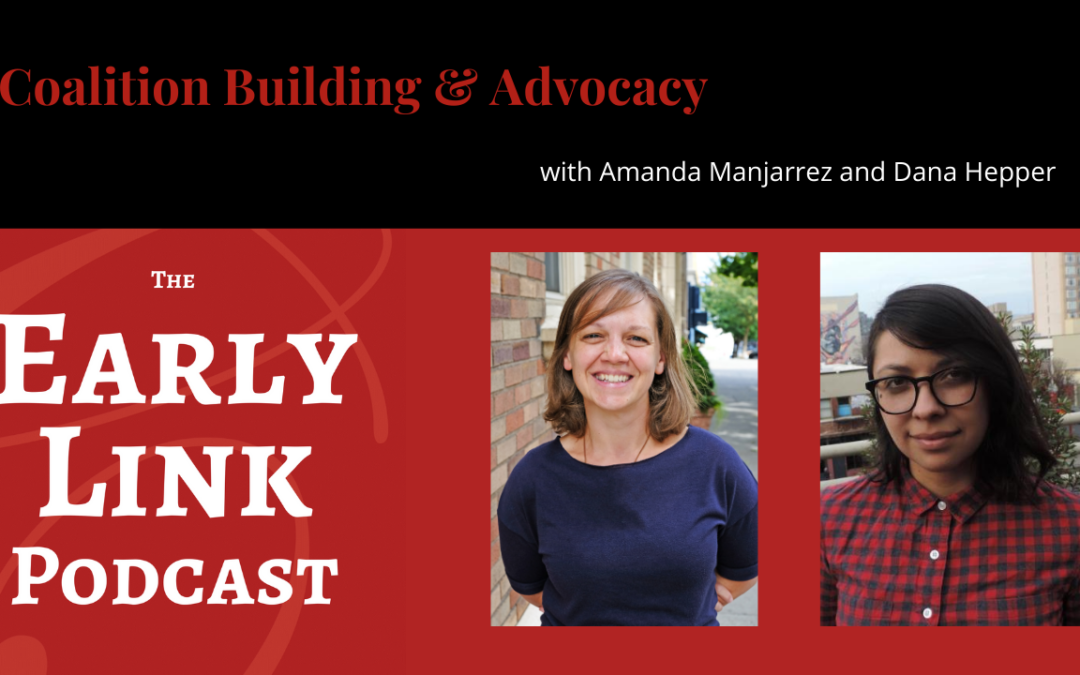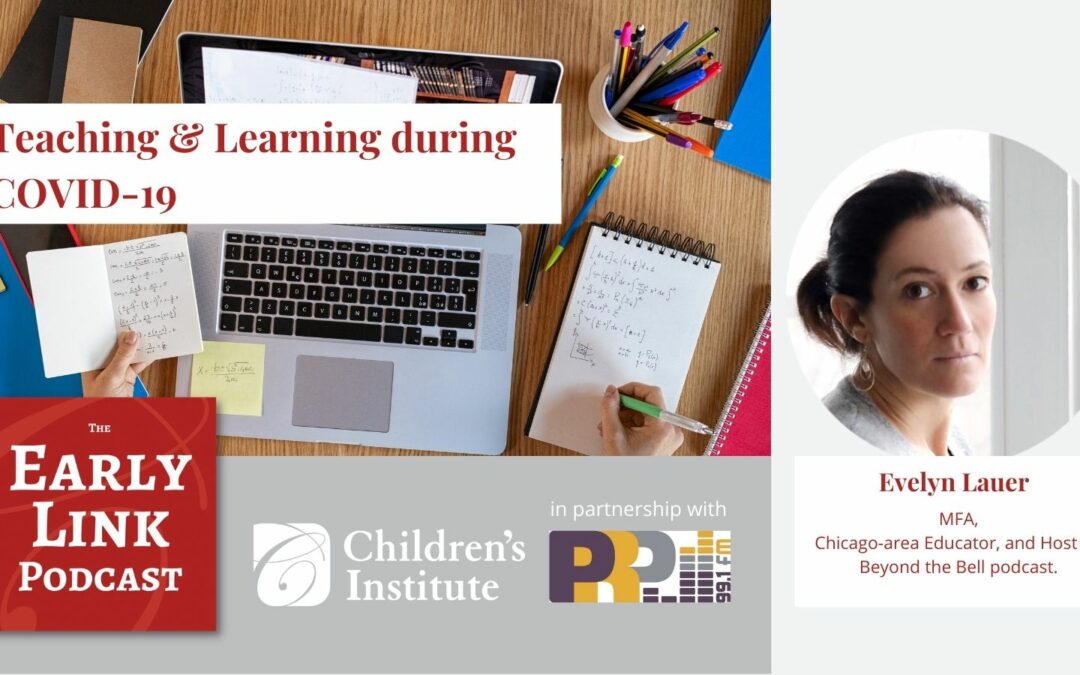
Teaching & Learning During COVID-19
On this episode of The Early Link Podcast, host Rafael Otto speaks with podcaster and educator Evelyn Lauer about the struggles of teaching during a global pandemic.
Guest:
Evelyn Lauer has taught high school English in the Chicago area for 20 years. She is the host of Beyond the Bell, a weekly podcast in which she interviews other educators about teaching during the pandemic. She holds an MFA in creative writing from Texas State University and an MAT in secondary English education from the University of Iowa.
Summary:
Evelyn describes some of the difficulties of teaching virtually and explains why hybrid is actually the hardest form of teaching. She also shares stories she’s heard from educators about the blurred lines between work and home and what life has been like for teachers who are also parents. Finally, she discusses the social emotional impact of distance learning on kids and how our education system will be dealing with the effects of the pandemic for years to come.
Transcript
Rafael Otto: [00:00:00] Welcome to The Early Link Podcast. I’m your host, Rafael Otto. As usual, you can catch us on the airwaves on 99.1 FM in Portland on Sundays at 4:30 PM or subscribe and listen wherever you find your podcasts. Today. I’m speaking with Evelyn Lauer, who is based in Chicago and is a writer, high school English teacher, and most recently host of the podcast called Beyond the Bell.
Just last October, she set out to talk with teachers about the struggles of teaching during a global pandemic and has heard lots of great stories about how education has been flipped on its head for better or worse. Evelyn, welcome to the podcast.
Evelyn Lauer: [00:00:34] Thank you so much for having me. It’s so nice being on the other side of this.
Rafael Otto: [00:00:39] Yeah, it’s great to be talking with a fellow interviewer. Well, I’m hoping you can share some stories about what you’ve been learning from teachers as you’ve been talking with people all over the country. And if at first, could you just tell me about your podcast and why you got started?
Evelyn Lauer: [00:00:57] Sure. So, as you mentioned, it’s called Beyond the Bell and I guess my kind of idea what the title was… we’re really, especially from the spring and fall, we were all, most of us teaching in nontraditional settings. So not really in a traditional classroom. Most of us were teaching via Zoom or Google Meets or Microsoft Teams or something like that.
And that’s so different than what most educators are used to. And one of the standards of school is the idea of the “bell,” and we’re now “beyond the bell.” It’s like everything that’s happening outside of the traditional classroom. So that was kind of the idea for it. But really I wanted to focus on how teachers are teaching during the pandemic and the effects of that, because like everything else during all of this, our lives have had to change so much and no one ever expected that you could actually teach from home.
Many of us have been doing that for so long that now we’re transitioning back into the classroom and trying to do both at the same time. And so it’s just the idea of like, how did the pandemic affect education and teaching and to see, teachers’ stories about their experiences and to sort of document that was my idea.
Rafael Otto: [00:02:17] And we’ve just passed the one-year mark for when things shut down. So, tell me, what are some of the stories that stand out when you’re talking to teachers about what this transition has been like and what they’ve had to go through to make the classrooms really come alive for their students?
Evelyn Lauer: [00:02:33] Yeah. I mean, most of the educators that I’ve talked with are secondary school educators. And I think that at the secondary level, our experiences with teaching during COVID have been perhaps different than some elementary school teachers. At the high school level, we’re dealing with an extreme lack of engagement from the perspective of… the students turn their cameras off.
So most of the day when we’re teaching on Zoom, like I teach via Zoom, students’ cameras are turned off. And so the number one thing that I’ve heard over and over again, with all of the teachers that I’ve spoken with on the podcast, is this idea of engagement. So what does engagement look like when you can’t see students’ faces. Everyone feels a real loss about that, for sure.
But also it has made us really kind of think about: even when students are in our classroom, they’re physically present, how engaged are they really? And how do you measure engagement? Because we have all had students who are physically there but really aren’t there. And so having to find new ways to engage students using different technology or the use of the chat. So, maybe they’re engaged in writing in a chat box, but not engaged by unmuting themselves or showing their faces on camera. So I would say the engagement piece is probably the number one thing that I hear educators talk about. And then versus like, when I have spoken with primary school or middle school teachers, the engagement piece seems to be higher. Meaning that they’re more accustomed to seeing their students’ faces. And the students seem to sort of want to share their whole days, maybe overshare, like sharing what they had for lunch, can I go to the bathroom, and all that kind of management that’s probably happening. So it seems like there’s extremes based on the age of the students that teachers teach.
For the full transcript, please download the pdf below.
